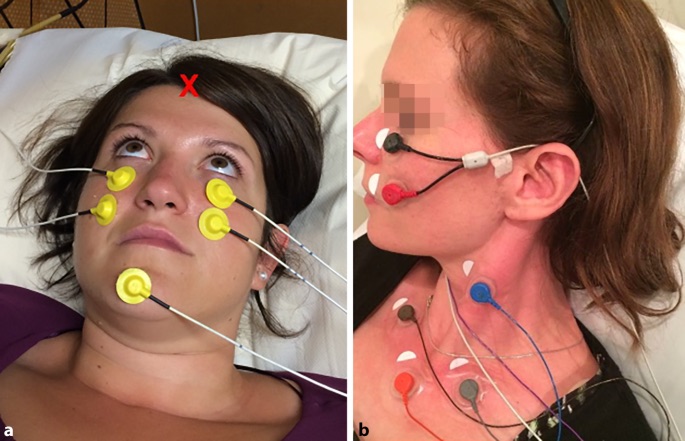Vestibular Evoked Myogenic Potentials (VEMP) testing is a specialized diagnostic tool used to evaluate the functioning of the vestibular system, which is responsible for maintaining balance and spatial orientation. This testing assesses the integrity of the vestibular pathways, particularly the saccule and the inferior vestibular nerve, through the measurement of muscle responses to auditory stimuli. VEMP testing is increasingly utilized in clinical settings for diagnosing various vestibular disorders, including vestibular schwannomas, Meniere’s disease, and other conditions that can affect balance and spatial awareness.
Table of Contents
ToggleThe Anatomy and Physiology of the Vestibular System
The vestibular system comprises structures located in the inner ear, including the semicircular canals, utricle, and saccule. These components work together to detect head movements and changes in position, providing critical information for maintaining balance. The saccule, specifically, responds to vertical acceleration and plays a crucial role in the VEMP response.
The Role of the Saccule in VEMP Testing
During VEMP testing, sound stimuli are presented to the patient, typically through headphones. The resulting muscular responses are recorded, usually from the sternocleidomastoid (SCM) muscle in the neck. The saccule’s involvement is significant because it directly influences the muscle’s reaction to sudden auditory stimuli, allowing clinicians to assess vestibular function effectively.
How VEMP Testing Works
VEMP testing typically involves two main types: air-conducted and bone-conducted VEMP. Both methods aim to elicit muscle responses, but they differ in the way sound is delivered to the inner ear.
Air-Conducted VEMP
In air-conducted VEMP testing, the patient is seated comfortably while headphones deliver short bursts of sound, often at specific frequencies. The sound stimulus usually consists of clicks or tone bursts that generate a sudden auditory stimulus. The muscle activity of the SCM is then recorded using surface electromyography (EMG), allowing for the analysis of the VEMP response.
Bone-Conducted VEMP
Bone-conducted VEMP testing utilizes a bone vibrator placed on the mastoid process behind the ear. This method allows sound waves to stimulate the inner ear directly through the skull. Bone-conducted VEMP is particularly useful for assessing the integrity of the vestibular system in patients with conductive hearing loss or those who cannot tolerate air-conducted stimuli.
Interpretation of VEMP Results
The results of VEMP testing are analyzed based on several parameters, including latency, amplitude, and the presence or absence of the VEMP response.
Key Parameters in VEMP Analysis
- Latency: The time taken for the VEMP response to occur after the auditory stimulus. Increased latency may indicate vestibular pathway dysfunction.
- Amplitude: The size of the VEMP response. Reduced amplitude can suggest a decrease in the integrity of the vestibular pathways.
- Asymmetry: Comparing responses from both sides of the body can highlight discrepancies that may indicate unilateral vestibular dysfunction.
Clinical Applications of VEMP Testing
VEMP testing is valuable in diagnosing various vestibular disorders. Some of the key applications include:
- Vestibular Schwannoma: VEMP can help identify abnormalities in the vestibular system associated with tumors affecting the vestibular nerve.
- Meniere’s Disease: Abnormal VEMP results can indicate the presence of this condition, which is characterized by episodes of vertigo, tinnitus, and hearing loss.
- Vestibular Neuritis: VEMP testing can aid in diagnosing this condition, which often follows viral infections and leads to sudden balance issues.
- Bilateral Vestibular Loss: Patients with bilateral vestibular loss may show absent or severely reduced VEMP responses, indicating significant dysfunction in the vestibular system.
Advantages and Limitations of VEMP Testing
Advantages
- Non-invasive: VEMP testing is generally well-tolerated and non-invasive, making it suitable for a wide range of patients, including children and the elderly.
- Rapid Results: The testing procedure is relatively quick, often providing immediate feedback for clinicians.
- Objective Measure: VEMP offers objective data regarding vestibular function, complementing subjective assessments such as patient history and clinical examinations.
Limitations
- Patient Cooperation: Some patients may find it challenging to maintain the required position during testing, which can affect results.
- False Negatives: In certain cases, patients may present with vestibular dysfunction despite normal VEMP results.
Vestibular Evoked Myogenic Potentials (VEMP) testing is a crucial tool for assessing vestibular function and diagnosing related disorders. By understanding the underlying anatomy and physiology of the vestibular system, clinicians can effectively interpret VEMP results and provide accurate diagnoses. As research continues to evolve, VEMP testing will likely become even more integral to the clinical evaluation of vestibular health.








